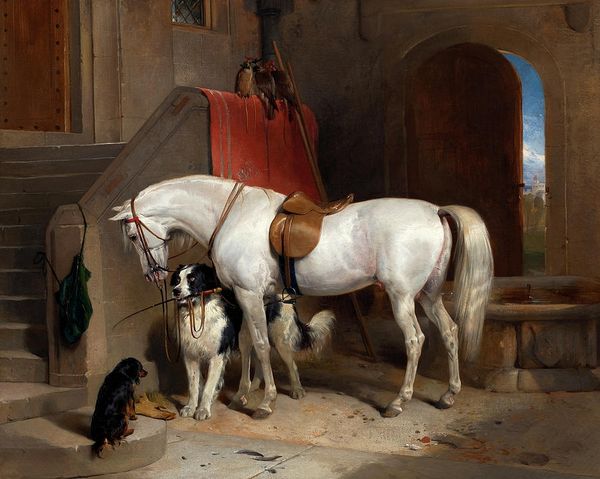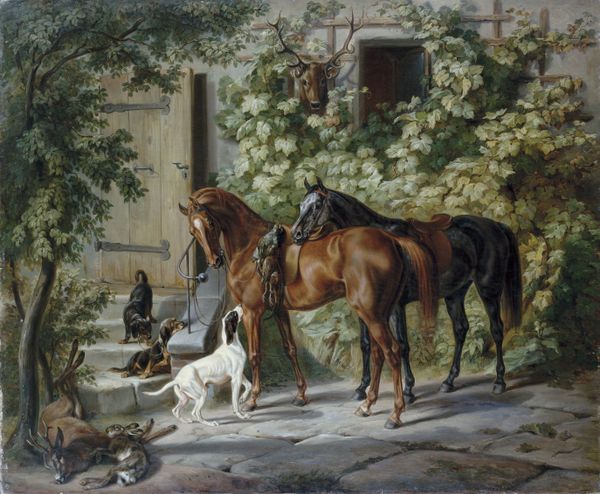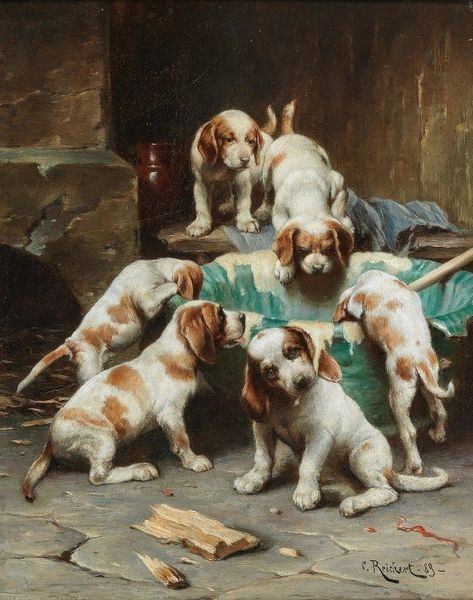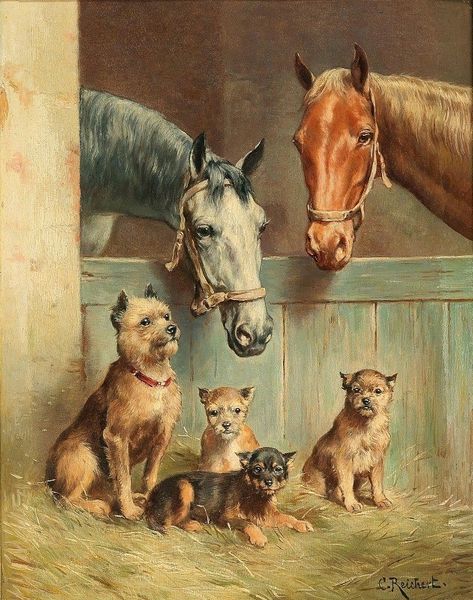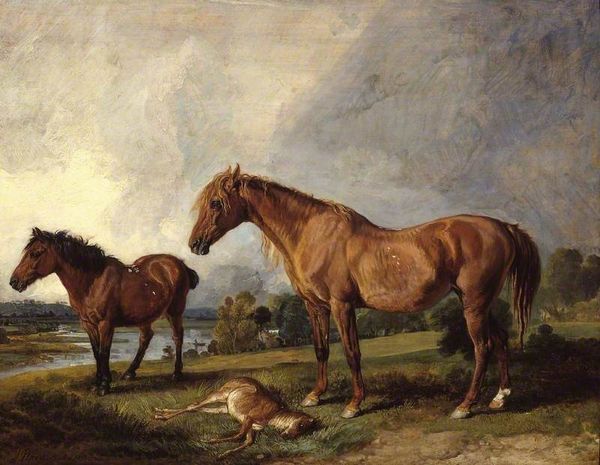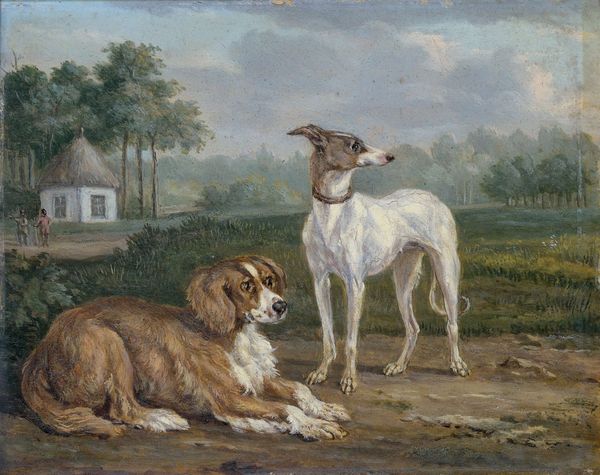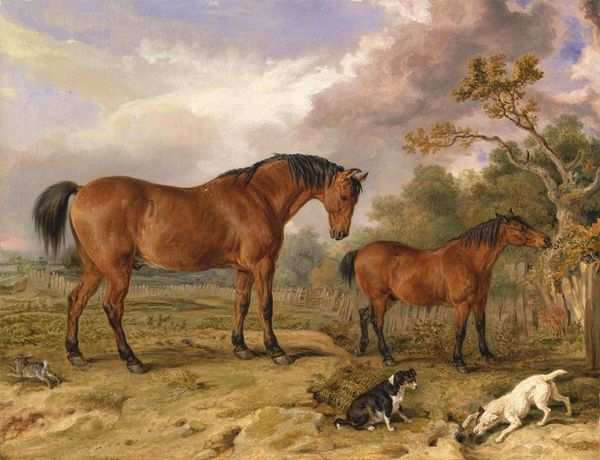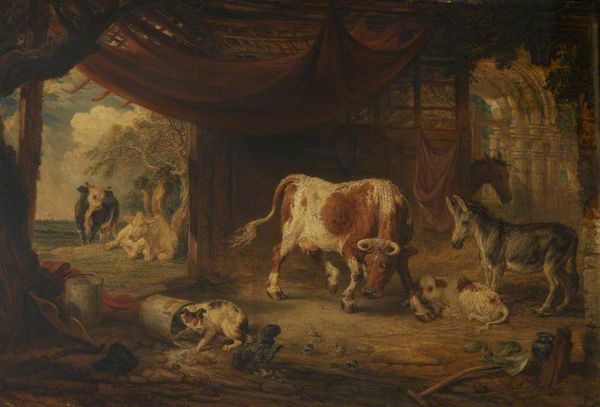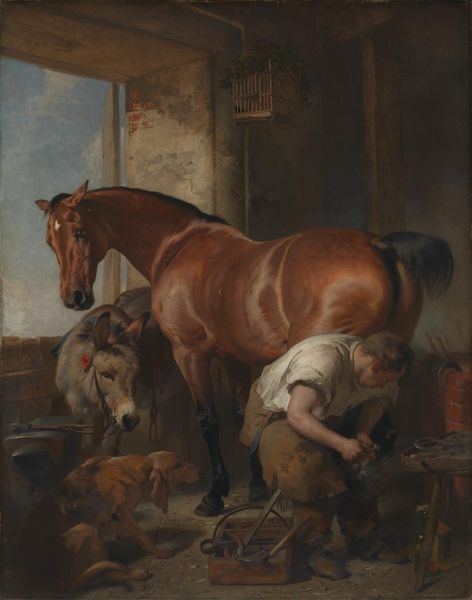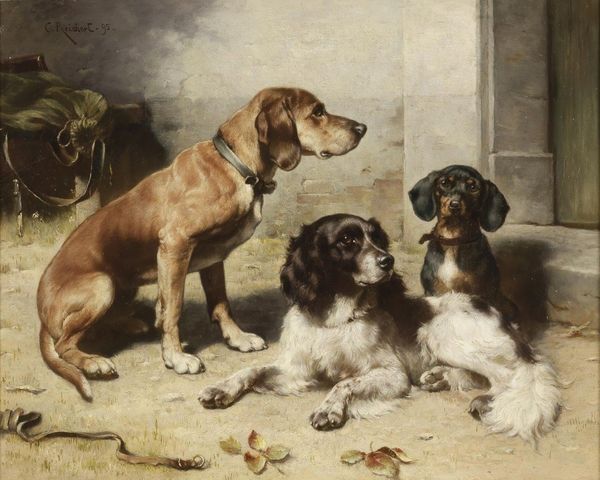
Dimensions: 154 x 226 cm
Copyright: Public domain
Editor: This is Edwin Landseer's "The Arab Tent," an oil painting from 1866. I'm immediately struck by the composition; all these animals crammed into such an intimate space create a real sense of stillness. How do you read the relationships between form and content here? Curator: Consider first the light: observe how Landseer modulates it across the canvas, delineating the textures of fur and fabric with considerable skill. The strategic placement of the animals structures the image. The composition unfolds less as a representation of distinct creatures, and more as an exercise in tonal and textural arrangement, no? Editor: So, it's less about the "what" and more about the "how?" I mean, obviously it's a tent full of animals, but you're focusing on the artist's manipulation of light, shadow and form, rather than their symbolism? Curator: Precisely. The semiotic meaning we might ascribe is secondary to Landseer's orchestration of purely formal elements. Note the correspondence between the curvature of the white horse's flank and the drape of the tent; it speaks to a dialogue between natural form and constructed space, wouldn’t you agree? How the shapes and textures interplay is paramount. Editor: That's fascinating, I never really thought about paintings in such an abstract way. It’s less a picture and more a study in shapes. Curator: Indeed. The artist asks us to engage not with narrative, but with the fundamental language of painting. That’s its most profound offering. Editor: Thanks, that gives me a completely new perspective. I was too caught up in what everything *meant* and forgot to just...look.
Comments
No comments
Be the first to comment and join the conversation on the ultimate creative platform.
